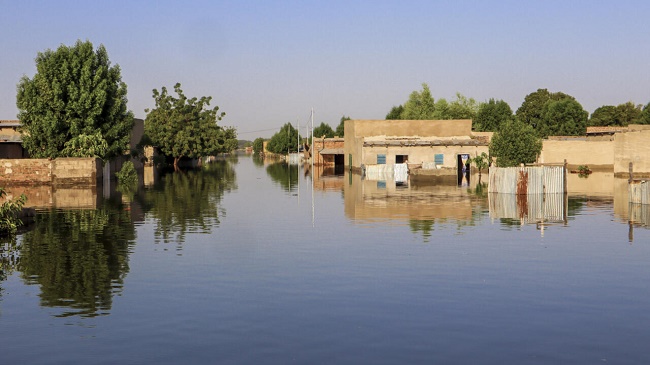The year 2024 was the warmest or second-warmest year on record for Africa along with devastating floods, droughts and marine heat waves, according to the World Meteorological Organisation’s (WMO) State of Climate in Africa 2024 report, released on Monday, May 12, 2025. The extreme weather and other impacts raise serious concerns for the continent’s food and economic security.

The El Niño event of 2023-2024 was partly to blame for the warming and extreme weather, along with global warming and consequent climate change.
The average annual surface temperature across Africa was around 0.86°C above the average annual surface temperature between 1991 and 2020. The strongest warming was in North Africa, which was 1.28°C above the 1991-2020 average. North Africa is the fastest warming region in the continent.
Extreme temperatures impacted agriculture and other livelihoods in many parts of Africa. For instance in mid-March, Sudan and Somalia suffered from an unprecedented heat wave with temperatures reaching above 45°C, leading to shut down of schools and impacts on food availability and livelihoods.
Around the same period and in April, there were extreme temperatures in the Sahel region as well. In July, a heat dome phenomenon, or a large high pressure area, had caused record breaking temperatures in North Africa.
Sea surface temperatures around the continent, especially in the Atlantic Ocean and in the Mediterranean Sea were also record high. Alarmingly, almost the entire ocean area around Africa was under marine heat waves (MHWs) of “strong, severe or extreme intensity during 2024”, according to the report.
MHWs are extended periods of extreme ocean temperatures that affect the health and productivity of marine life and also aid in the formation and intensification of tropical cyclones which frequently impact many countries of Africa, especially towards the southeast such as Malawi, Mozambique and Madagascar.
A total area of 30,00,000 square kilometres of the ocean was affected by MHWs between January and April 2024. In the latter six months of the year, the total affected area was 15,00,000 square kilometres. The area affected by MHWs was the highest since records began in 1993, breaking the previous record set in 2023.
Many African countries also suffered from either excessive rainfall or lack of rainfall throughout 2024, leading to crippling floods in many regions and debilitating droughts in others.
There was excessive rainfall in large parts of the Sahel region in 2024 that lead to floods. The Sahara desert, one of the driest regions on the planet, received more than five times its annual rainfall in the month of August, causing rare floods in the desert and impacting infrastructures.
In eastern Africa, Kenya, Tanzania and Burundi were hit by floods from March to May affecting 7,00,000 people and the deaths of hundreds of people. The same region received less than average rainfall between October and December, raising food security concerns. In western and central Africa, floods impacted four million people across Nigeria, Niger, Chad, Cameroon and the Central African Republic in 2024.
In southern and northern Africa, the situation was exactly the opposite with extensive drought, with some of the countries such as Morocco under a long-term drought. Morocco’s agricultural output was 42 per cent below the five-year average as the country grapples with a six-year-long drought.
Malawi, Zimbabwe and Zambia suffered from their worst drought in the last two decades, with the aggregate cereal yields for southern Africa being 16 per cent below the five-year average. Zimbabwe suffered the worst, with yields 50 per cent less than the five-year average. The yields were below average by 43 per cent in Zambia.
The national meteorological or hydrological services in various countries of Africa have taken steps to generate and communicate better forecasts and early warnings to the people affected by extreme weather events.
“The Nigeria Meteorological Agency has embraced digital platforms to disseminate vital agricultural advisories and climate information. The Kenya Meteorological Department provides weather forecasts to farmers and fishers through mobile applications and SMS messages. The South African Weather Service has also integrated AI-based forecasting tools and modern radar systems for effective and timely weather predictions,” according to a press release by the WMO.
The report reveals “a stark pattern of extreme weather events, with some countries grappling with exceptional flooding caused by excessive rainfall and others enduring persistent droughts and water scarcity,” said WMO secretary general, Celeste Saulo.
“WMO and its partners are committed to working with Members to build resilience and strengthen adaptation efforts in Africa through initiatives like Early Warnings for All,” she added.
By Akshit Sangomla, DownToEarth
